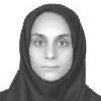International Journal of Intelligent Systems and Applications (IJISA)
IJISA Vol. 5, No. 10, 8 Sep. 2013
Cover page and Table of Contents: PDF (size: 351KB)
Nonlinear Evaluation of Electroencephalogram Signals in Different Sleep Stages in Apnea Episodes
Full Text (PDF, 351KB), PP.68-73
Views: 0 Downloads: 0
Author(s)
Index Terms
Approximate Entropy, Electroencephalogram, Largest Lyapunov Exponents, Nonlinear Analysis, Sleep Apnea
Abstract
Distinct sleep phases are related to different dynamical patterns in electroencephalogram (EEG) signals. In this article, the relationship between the sleep stages and nonlinear behavior of sleep EEG is explored. In particular, analysis of approximate entropy (ApEn) and the largest Lyapunov exponent is evaluated in patients with sleep apnea, which is defined as respiratory flow that is suspended or decreased for more than 10 s. The pathological sleep EEG signals for analysis were obtained from the MIT-BIH polysomnography database available online at the PhysioBank. The results show that for the both normal and apneic sleep epochs, ApEn decreased significantly as the sleep goes into deeper stages. Therefore, it indicated that as sleep becomes deeper, the brain function becomes less activated. Compared with normal sleep, the mean value of largest lyapunov exponents was also significantly lower than that of normal epochs during deep sleep stages. The results also show that the average largest lyapunov exponents of EEG signals increased in the REM state. Because during this stage of sleep, the cortex becomes more active and more neurons incorporate in the information processing. In conclusion, the nonlinear dynamical measures obtained from the nonlinear dynamical analysis such as the approximate entropy and largest lyapunov exponents can be useful for characterizing the physiological or pathological states of the brain.
Cite This Paper
Atefeh Goshvarpour, Ataollah Abbasi, Ateke Goshvarpour, "Nonlinear Evaluation of Electroencephalogram Signals in Different Sleep Stages in Apnea Episodes", International Journal of Intelligent Systems and Applications(IJISA), vol.5, no.10, pp.68-73, 2013. DOI:10.5815/ijisa.2013.10.09
Reference
[1]Friedman M, Bliznikas D, Klein M, Duggal P, Somenek M, Joseph NJ. Comparison of the incidences of obstructive sleep apnea/hypopnea syndrome in African-Americans vs. Caucasians. Otolaryngol Head Neck Surg. 134 (2006) 545—550.
[2]Huang S.G., Li Q.Y., Sleep respiratory disorder study group, respiratory disease branch, Shanghai medical association, Chin. J. Tuberc. Respir. Dis. 26 (2003) 268.
[3]Dijk D.J, Shanahan T.L, Duffy J.F, Ronda J.M, Czeisler C.A. Variation of electroencephalographic activity during non-rapid eye movement and rapid eye movement sleep with phase of circadian melatonin rhythm in humans, J. Physiol. 505 (1997) 851—858.
[4]Agnew H.W, Webb W.B, Williams R.L. Sleep patterns in late middle age males: an EEG study, Electroencephalogr. Clin. Neurophysiol. 23 (1967) 168—171.
[5]Bes F., Schulz H., Navelet Y., Salzarulo P. The distribution of slow-wave sleep across the night: a comparison for infants, children and adults, Sleep 14 (1991) 5—12.
[6]Bixler E.O., Kales A., Jacoby J.A., Soldatos C.R., Vela-Bueno A. Nocturnal sleep and wakefulness: effects of age and sex in normal sleeper, Int. J. Neurosci. 23 (1984) 33—42.
[7]Bliwise D.L. Sleep in normal aging and dementia, Sleep 16 (1993) 40—81.
[8]Feinberg I., Koresko R.L., Heller N. EEG sleep patterns as a function of normal and pathological aging in man, J. Psych. Res. 5 (1967) 107—144.
[9]Agarwal R. Automatic detection of micro-arousals. In Proceedings of the 27th IEEE international conference on engineering in medicine and biology society, (2006) 1158—1161.
[10]Hsu C-C., Shih P-T. A novel sleep apnea detection system in electroencephalogram using frequency variation, Expert Systems with Applications 38 (2011) 6014–6024
[11]Fell J., Roschke J., Beckmann P. Deterministic chaos and the first positive Lyapunov exponent: a nonlinear analysis of the human electroencephalogram during sleep, Biol. Cybernet. 69 (2) (1993) 139—146.
[12]Acharya U.R., Faust O., Kannathal N., Chua T., Laxminarayan S. Non–linear analysis of EEG signals at various sleep stages, Computer Methods and Programs in Biomedicine 80 (2005) 37—45
[13]Cvetkovic D., Ubeyli E.D., Holland G., Cosic I. Alterations in sleep EEG activity during the hypopnoea episodes, J. Med. Syst. 34 (2010) 485—491
[14]Carrubba S., Kim P.Y., McCarty D.E., Chesson Jr. AL., Frilot C., Marino A.A. Continuous EEG–based dynamic markers for sleep depth and phasic events. Journal of Neuroscience Methods 208 (2012) 1—9
[15]www.physionet.org
[16]Ichimaru Y., Moody G.B. Development of the polysomnographic database on CD-ROM, Psychiatry and Clinical Neurosciences 53 (1999) 175—177
[17]Goldberger A.L., Amaral L.A.N., Glass L., Hausdor J.M., Ivanov P.Ch., Mark R.G., Mietus J.E., Moody G.B., Peng C.K., Stanley H.E. PhysioBank, PhysioToolkit, and Physionet: components of a new research resource for complex physiologic signals. Circulation 101(1999) e215–e220.
[18]Haykin S., Li X.B. Detection of signals in chaos. Proc IEEE, 83(1) (1995) 95–122.
[19]Abarbanel H.D.I., Brown R., Kennel M.B. Lyapunov exponents in chaotic systems: their importance and their evaluation using observed data. Int. J. Mod. Phys. B. 5(9) (1991) 1347–1375.
[20]Pincus S.M. Approximate entropy as a measure of system complexity, Proc. Natl. Acad. Sci. U.S.A. 88 (1991) 2297—2301.
[21]Pincus S.M., Goldberger A.L. Physiological time-series analysis: what does regularity quantify? Am. J. Physiol. 266 (1994) H1643—H1656.
[22]Diambra L., Bastos de Figuereda J.C., Malta C.P. Epileptic activity recognition in EEG recording, Physica A 273 (1999) 495—505.
[23]Zhang J., Yang X.C., Luo L., Shao J., Zhang C., Ma J., Wang G.F., Liu Y., Peng C.-K., Fang J. Assessing severity of obstructive sleep apnea by fractal dimension sequence analysis of sleep EEG, Physica A. 388 (2009) 4407—4414
[24]Kobayashi T., Misaki K., Nakagawa H., Madokoro S., Ihara H., Tsuda K., Umezawa Y., Murayama J., Isaki K. Nonlinear analysis of the sleep EEG, Psychiatry Clin. Neurosci. 53 (2) (1999) 159—161.
[25]Tong M.R., Pei L., Tong M.Q., Susumu S. Textbook of Polysomnogramology, People's Military Medical Press, Beijing, 2004.


